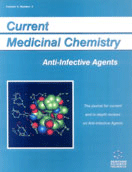Abstract
Since the discovery of thienamycin (1) in 1976, many studies on the synthesis and structure-activity relationships of parenteral-use drugs have been done and several carbapenems, imipenem (2), panipenem (3), and meropenem (7), have been marketed. The development of oral carbapenems, however, is a fairly slow process because carbapenems are considered unstable in the stomach and intestine. Recently, several orally active carbapenems without stability problems have been developed as prodrug esters or prodrug peptides, including GV-118819 (12), CS-834 (13), L-084 (14), DZ-2640 (15), and peptidic derivatives of CL 191,121 (16). The active forms (35), (41), (44), (45), (16) of these prodrugs exhibited potent and well balanced antibacterial activities as well as resistance to renal dehydropeptidase-I. The pharmacokinetic parameters of compounds (12), (13), (14), and (15) after oral administration to healthy volunteers were reported. The half-life (t1 / 2) of GV-118819 (12) was longer than that of the other compounds, while the Cmax, AUC and urinary excretion rate of L-084 (14) were higher than those of the others. In this review, the synthesis, chemical and biological properties, and pharmacokinetics of these oral carbapenems are described.
Keywords: Carbapenem Development, Thienamycin, Imipenem, Panipenem, Meropenem, Synthsis, Beta-Methlazetidin-2-one
 20
20

